#Practitioners of Esoteric Revelations
Text
revisiting the Silas Multiverse with some doodle refs for my personal eldritch horror project

i love you fucked up backstabbing horrible toxic gay people who rule the word
#eitan's art tag#Practitioners of Esoteric Revelations#oc: silas avenir#oc: raz grimr#oc: oren grimr
18 notes
·
View notes
Text
hogwarts houses as types of academia
gryffindor: light academia:
Reading: Engaging in reading classic literature, poetry, and philosophical works. This includes works by authors such as Shakespeare, Jane Austen, F. Scott Fitzgerald, Virginia Woolf, and many others.
Writing: Writing poetry, journal entries, essays, or even creating fictional stories. Embracing the act of writing as a means of self-expression and intellectual exploration.
Study sessions: Spending time in cozy, book-filled spaces to study or discuss academic topics with friends. This could involve reading groups, literary discussions, or even collaborative projects.
Visiting libraries and bookstores: Exploring libraries and bookshops, reveling in the atmosphere of knowledge and discovery. Browsing through old, weathered books and discovering hidden literary gems.
Art appreciation: Visiting art galleries and museums to admire classical artworks and contemplate their meanings. Drawing, painting, or sketching as a form of self-expression or relaxation.
Intellectual discussions: Engaging in deep conversations about literature, philosophy, history, or any other intellectual pursuits. Exchanging ideas and perspectives with like-minded individuals.
Tea and coffee rituals: Enjoying a cup of tea or coffee while reading, writing, or engaging in intellectual discussions. Embracing the cozy and contemplative atmosphere these beverages provide.
Nature walks: Taking leisurely walks in natural settings such as parks, gardens, or countryside areas. Appreciating the beauty of nature and finding inspiration in the peaceful surroundings.
Vintage fashion: Embracing classic and timeless fashion styles inspired by the early to mid-20th century. This may include tweed jackets, cardigans, vintage dresses, Oxford shoes, and accessories like bowties or berets.
Academic pursuits: Pursuing academic interests through formal education, self-study, or research. Embracing a lifelong love of learning and intellectual curiosity.
slytherin: chaotic academia:
Exploring Esoteric Topics: Chaotic academics often find themselves drawn to obscure and esoteric subjects that may not be part of mainstream academia. This could include anything from ancient mythology to quantum physics to postmodern literature.
Creating Artistic Mashups: The aesthetic of chaotic academia involves blending different artistic styles, mediums, and influences to create unique works of art. This could mean mixing classical paintings with modern graffiti or combining poetry with experimental music.
Hosting Salon-style Gatherings: Instead of traditional academic conferences or seminars, chaotic academics may prefer hosting informal gatherings or salons where ideas are freely exchanged over cups of tea or glasses of wine. These events often encourage interdisciplinary discussions and creative collaborations.
Experimenting with Fashion: Chaotic academia embraces a diverse range of fashion styles that reflect the individuality and eccentricity of its practitioners. This could include vintage clothing, thrift store finds, and DIY creations, all mixed together in unexpected combinations.
Engaging in Performance Art: Performance art is a common form of expression within chaotic academia, allowing practitioners to explore complex ideas and emotions through live performance. This could involve anything from avant-garde theater to interactive installations to spoken word poetry.
Creating Zines and DIY Publications: Zines are small, self-published magazines that often feature personal essays, artwork, and other creative content. Chaotic academics may produce zines as a way to share their ideas and connect with like-minded individuals outside of traditional academic channels.
Participating in Protest and Activism: Chaotic academia is often intertwined with social and political activism, with practitioners using their knowledge and creativity to advocate for change. This could involve participating in protests, organizing community events, or using art as a form of resistance.
Exploring Alternative Lifestyles: Chaotic academics may embrace unconventional lifestyles that prioritize creativity, self-expression, and personal growth over traditional notions of success or stability. This could include living in intentional communities, practicing minimalism, or pursuing nomadic lifestyles.
ravenclaw: dark academia:
Reading Classic Literature: Engage in reading classic literature from authors such as Fyodor Dostoevsky, Edgar Allan Poe, or Oscar Wilde. Dark academia enthusiasts often prioritize literature that explores themes of existentialism, tragedy, and the human condition.
Visiting Libraries and Bookstores: Spend time in old, atmospheric libraries and bookstores, surrounded by towering shelves of books. Delve into dusty volumes and lose yourself in the scent of aged paper and leather bindings.
Writing: Embrace writing as a form of self-expression. Keep a journal, write poetry, or work on a novel. Dark academia often celebrates the act of writing as a way to grapple with complex emotions and ideas.
Exploring History and Philosophy: Dive into the depths of history and philosophy, exploring ancient civilizations, political theories, and ethical dilemmas. Engage in deep discussions and debates with fellow enthusiasts.
Attending Lectures and Cultural Events: Attend lectures, seminars, and cultural events such as art exhibitions, theater performances, and classical music concerts. Immerse yourself in intellectual discourse and appreciate the beauty of human creativity.
Studying in Old Buildings and Cafés: Find a quiet corner in an old university building or atmospheric café to study or work on academic pursuits. Surround yourself with the ambiance of stained glass windows, creaky wooden floors, and dim lighting.
Wearing Vintage and Classic Clothing: Embrace a wardrobe inspired by vintage and classic styles, featuring tailored blazers, tweed jackets, turtleneck sweaters, and pleated skirts. Incorporate accessories like leather satchels, fountain pens, and round glasses to complete the look.
Exploring Gothic Architecture and Landscapes: Wander through gothic cathedrals, ivy-covered university buildings, and sprawling estates with overgrown gardens. Dark academia aesthetics often draw inspiration from the haunting beauty of gothic architecture and landscapes.
Creating Art and Music: Express your creativity through art, music, or other forms of artistic expression. Experiment with drawing, painting, photography, or playing musical instruments to capture the essence of dark academia.
Engaging in Thoughtful Reflection: Take time for introspection and self-reflection, pondering life's existential questions and grappling with the complexities of the human experience. Embrace solitude as a means of deepening your understanding of yourself and the world around you.
hufflepuff: cottagecore academia:
Reading Retreats: Creating cozy reading nooks filled with vintage books, plush cushions, and warm blankets. Spend hours immersed in literature, from classic novels to poetry and philosophy.
Nature Walks and Studies: Take leisurely strolls through meadows, forests, and gardens to observe plants, animals, and landscapes. Keep journals to document your observations and sketches of flora and fauna.
Herbalism and Botany: Learn about medicinal plants and their uses, cultivate a small herb garden, and experiment with herbal remedies and teas. Incorporate botanical illustrations into your study materials and decorate your space with pressed flowers and botanical prints.
Arts and Crafts: Explore traditional handicrafts such as knitting, embroidery, quilting, and pottery. Create beautiful handmade items inspired by nature and rustic living, adding a personal touch to your surroundings.
Cooking and Baking: Embrace the joy of home cooking using fresh, seasonal ingredients. Experiment with heirloom recipes and traditional cooking methods, preserving jams and pickles, and baking rustic bread and pastries.
Philosophical Discussions: Engage in deep conversations about ethics, spirituality, and the human condition. Host intimate gatherings with friends or participate in online forums to exchange ideas and perspectives.
Musical Pursuits: Learn to play musical instruments such as the piano, violin, or acoustic guitar. Practice folk tunes, classical compositions, or create your own melodies inspired by nature and the countryside.
Writing and Journaling: Keep a reflective journal to record thoughts, experiences, and observations. Explore creative writing through poetry, short stories, or essays inspired by the natural world and your personal journey.
Historical Research: Delve into the history of rural life, folklore, and traditional crafts. Visit local museums, libraries, and archives to uncover the stories and traditions of past generations.
Sustainability and Self-Sufficiency: Embrace sustainable living practices such as composting, recycling, and reducing waste. Learn practical skills like gardening, food preservation, and DIY home repairs to foster self-sufficiency and minimize your ecological footprint.
#harrypotter#hogwarts#academia#hogwartshouses#ravenclaw#slytherin#hufflepuff#gryffindor#darkacademia#books#cottagecore#lightacademia
7 notes
·
View notes
Note
📂
send 📂 for random useless extravagantly worldbuildy headcanons
Salem:
Remnant’s atmosphere is conventionally divided into two major strata, the zotikosphere and the upper psilosphere. These are separated by an atmospheric layer known to modern science as the koniolytic stratum, which is composed primarily of ozone and aura-saturated oxygen ions. Extreme heat and auric energy in this stratum interfere explosively with dust, and above it all normal aura- and dust-based reactions will spontaneously fail.
This model was formulated by human scientists when the koniolytic stratum was discovered several years before to the Great War; Salem has known of it for millennia thanks to a large, birdlike morph of grimm called mallemucks.
Rarely encountered by humans or faunus, mallemucks spend most of their lives on the wing near the equator, skimming just under the koniolytic stratum to feed on the aura-rich gas it contains and landing only once or twice a year. They were first observed by humans during the Great War, when the advent of high-altitude aircraft brought Mantelian spy planes close enough to provoke territorial aggression. Only a handful of sightings have been credibly reported since then.
Grimm describe the koniolytic stratum in patterns that Salem translates as ‘skin of the sky,’ a phrase that any well-read student of the occult would recognize as a key cosmological concept in the centuries-old esoteric tradition of northwest Sanus. Salem is quietly pleased that the scientists are finally catching up.
Ozma:
These days, Long Memory is officially registered as having a grav-dust-infused collapsible frame encased in a ballistics-grade polymer composite casing: fairly unremarkable, as huntsman weapons go. In actuality, the haft was forged with ateric steel—that is, a steel alloy made with grimm ash—which gives it properties similar to dust.
Unlike dust, which exhibits very high auric reactivity and tends to disintegrate when agitated by all but the most skilled practitioners, ateric alloys are quite durable and can, if tempered correctly, hold charges of auric energy. In the modern day, they are used most commonly for computing and cybernetic engineering.
Ozma relies on Long Memory to compensate for their lost magic, and habitually carries a charge powerful enough to level half a dozen city blocks if released all at once. The cane is, in effect, a magical battery.
The gears set into the pommel serve no actual function other than to lend a gloss of credence to their explanation that Long Memory stores up kinetic energy. The haptic feedback they get from the gears does, however, help them keep precise track of time while wielding it—helpful in lives when their half-realized semblance morphs into some form of temporal manipulation.
Oscar:
While a plurality of Mistral’s urban population subscribe to some form of Draconism—worship of the Dragon Brothers—the dominant religion in Anima is Kairoism.
A polytheistic tradition dating back thousands of years, Kairoism is one of the oldest living religions on Remnant. Its pantheon comprises eight powerful kairoi and the lesser but abundant aurai, and in practice it is principally concerned with cycles, particularly that of the harvest. Time itself, in Kairoist thought, is a circle: everything that has happened will happen again and everything that will happen must happen because it has already happened.
(The mantra Pyrrha recites when she unlocks Jaune’s aura is an abridged form of a Kairoist coming-of-age ritual.)
Oscar is a practicing Kairoist and, despite Ozma’s searing mortification about this, continues to be such even after witnessing Jinn’s revelation that the Dragon Brothers are both real and the creators of humankind.
Summer:
Depending upon who you ask uninhabited continent is called Alukah, Malus, or the Bleakland; its legal designation as per the Vytal Accords is Terra Ignota, and habitation there is banned by international law except for military and industrial purpose. (The name Salem favors is Alukah.)
Although the extraordinarily high numbers of grimm on the continent make for a powerful deterrent against settlement, the land is also incredibly rich in dust, and modern history is littered with sad tales of mining outfits lost to the grimm. One of the most notorious of these tragedies was Visage: an SDC company town situated near the southern extremity of the continent, only an hour’s flight away from the northern coast of Vacuo.
Visage is well-known because it was successful: the settlement was Nicholas Schnee’s crowning achievement and catapulted the Schnee Dust Company to international prominence. For twelve years, the mines of Visage supplied the global market with premium dust.
Then the young Jacques Schnee began to gather influence over the company, and over the next four years the wheels came violently off, as cost-cutting measures, several rounds of layoffs, and increasing pressure from corporate to dispense with ‘unnecessary’ safety measures weakened Visage from within. Sixteen years after its founding, the settlement was overwhelmed by grimm and wiped off the map. Out of almost two hundred residents, only thirteen survived: one of them an eight-year-old girl with silver eyes.
As a grown up, Summer does not talk about her childhood beyond that she grew up in an orphanage in Vacuo; and her staunch refusal to even touch dust branded by the SDC or its subsidiaries is easily explained away by the fact of her Vacuan citizenship.
#MAIDENS AND KINGDOMS ( hc. )#THIS DARK THING THAT SLEEPS IN ME ( hc: salem. )#FOND HEARTS CHARRED AS ANY MATCH ( hc: ozma. )#SUNS RUN TO SEED ( hc: oscar. )#THE FIRE AND THE ROSE ARE ONE ( hc: summer. )#[ one each because my notes are uhm.#extensive. hrghrd#and i am indecisive. ]
2 notes
·
View notes
Text
The "akashic recorder" is a particular function incorporated inside some black boxes of the second period technology.
That jerk’s black box should also have an akashic recorder function. ("fifth pierrot", bonus story, part 1).
As for its purpose, it's a device that records all the history of the third period as it comes to pass.
What advancements had the world below—the third period—made while he had been asleep? Behemo had once possessed an “akashic recorder” for learning that information ("fifth pierrot", bonus story, part 1).
It appeared as though the black box was being used That was likely it precisely recording the history of the third period. When he used it he’d be able to learn all about evillious’ past and present. ("fifth pierrot", bonus story, part 1).
That sort of thing takes after a concept of the theosophical religion of the nineteenth century in its attempt to establish an "esoteric buddhism" (akuno is also a buddhist, as he also publicly declared)
And would you guess what the theosophical religion introduced? The "akashic records".
That concept is very similar to the one we find in the evillious chronicles as both are supposed to look like "records of the history of the world".
Citing the wikipedia page of the "akashic records":
In the religion of theosophy and the philosophical school called anthroposophy, the akashic records are a compendium of all universal events, thoughts, words, emotions and intent ever to have occurred in the past, present, or future in terms of all entities and life forms, not just human. (wikipedia, akashic record).
It is also believed for them to be a "new age" version of what the Bible describes in Revelation 20, verse 12.
And I saw the dead, small and great, stand before God; and the books were opened: and another book was opened, which is the book of life: and the dead were judged out of those things which were written in the books, according to their works. (Revelation 20; 12).
The books contain all the deeds of every human being.
But there is big difference between those and the akashic records: while the books in Revelation are unaccessible to man, the "akashic records" are claimed (by the practitioners of theosophy) to be accessible by such when he manages to enter a particular plain of existance outside this world (in fact, akashic is the sanskrit word for "aether).
Plus, the books in Revelation contain all the deeds of mankind for them to be used on Judgment's day, while the "akashic records" are records of the history of the world (not just mankind's deeds) for the sake of merely recording the journey of every sentient being, without judgment of good and evil.
Of course, the functionality of the "akashic recorder" in evillious is much more similar to the "akashic records" of theosophy, than the books described in Revelation 20, with one exception:
while the "akashic records" allegedly contain information of the history of living beings, not only of the past and the present, but also of the future, the "akashic recorder" in the series only records the history of the third period as it comes to past (not including future events, like a giant camera recording the whole world as events happen in it).
That sounds like something Luna and Held would build in their attempt to "merely observe the third period" (as they say).
On the other hand Behemo also had a black box with such a recorder.
10 notes
·
View notes
Text
Best Numerologist In Delhi - Rajesh Shrimali
In the vast tapestry of existence, every individual is but a thread intricately woven into the fabric of the universe. Yet, each thread possesses its unique pattern, its own vibrancy, and its distinct purpose. Such is the philosophy that underpins the ancient art of numerology, a discipline that delves into the mystical relationship between numbers and the cosmos. In the bustling metropolis of Delhi, one luminary stands out in the realm of numerology – Rajesh Shrimali, a revered figure whose profound insights have illuminated the paths of countless seekers. Best Astrologer In Delhi, Astrologer In Delhi, Best Astrologer In Jodhpur, Best Astrologer In Mumbai, Astrologer In Mumbai
The Journey of Rajesh Shrimali:
Rajesh Shrimali's journey into the realm of numerology began with a thirst for deeper understanding and a quest for spiritual enlightenment. Born and raised in Delhi, his innate curiosity led him to explore various esoteric sciences, including astrology, palmistry, and vastu shastra. However, it was numerology that captivated him the most, with its elegant simplicity and profound revelations.
Driven by an insatiable passion for knowledge, Shrimali immersed himself in the study of numerology, delving into ancient texts, deciphering intricate codes, and unlocking the hidden wisdom encoded within numbers. His relentless pursuit of mastery saw him trained under esteemed mentors and scholars, honing his skills and refining his intuitive abilities.
The Essence of Numerology:
At its core, numerology is based on the belief that numbers possess inherent vibrational energies that influence every aspect of our lives, from our personalities and relationships to our destinies and fortunes. By analyzing the numerical significance of names, dates of birth, and other significant factors, numerologists like Rajesh Shrimali can unveil profound insights into an individual's psyche, character traits, and life path.
In the hands of a skilled practitioner like Shrimali, numerology becomes a powerful tool for self-discovery and personal growth. Through meticulously calculated charts and intuitive interpretations, he helps clients navigate the complexities of their existence, offering clarity, guidance, and a deeper understanding of their purpose.
The Impact of Numerology:
Over the years, Rajesh Shrimali has garnered a reputation as one of Delhi's preeminent numerologists, earning the trust and admiration of a diverse clientele. From business tycoons seeking strategic advice to starry-eyed couples embarking on the journey of marriage, his insights have touched lives in profound ways, guiding them towards fulfillment, success, and happiness.
Through his consultations, workshops, and publications, Shrimali has democratized the wisdom of numerology, making it accessible to all who seek its transformative power. His approach blends ancient knowledge with modern insights, bridging the gap between tradition and innovation to offer practical solutions for contemporary challenges.
Conclusion:
In the bustling metropolis of Delhi, amidst the cacophony of urban life, Rajesh Shrimali stands as a beacon of wisdom and enlightenment, illuminating the path towards self-discovery and fulfillment through the ancient art of numerology. With his profound insights, compassionate guidance, and unwavering dedication, he continues to empower individuals to unlock the secrets of their existence and embark on the journey towards their true potential. As the legacy of numerology endures through the ages, so too does the legacy of Rajesh Shrimali, a true luminary in the realm of cosmic wisdom.
0 notes
Text
Unlocking the Mysteries: A Guide to Tarot Card Reading in Kolkata
In the vibrant city of Kolkata, where tradition and mysticism entwine, the art of Tarot card reading has found a profound resonance. Exploring the mystical realm of divination, Kolkata has become a hub for seekers and enthusiasts alike. In this comprehensive guide, we delve into the enigmatic world of Tarot, uncovering its secrets, and providing a roadmap for those seeking to unlock the mysteries within.
The Essence of Tarot
Tarot cards, with their intricate symbols and archetypal imagery, serve as a powerful tool for introspection and foresight. Each card carries a unique energy, offering insights into the past, present, and future. The practice has gained immense popularity in Kolkata, drawing individuals like moths to the flame, eager to unravel the cosmic mysteries concealed within the cards.
Navigating the Spiritual Landscape
Understanding the Basics
To embark on a journey of Tarot exploration, one must grasp the fundamental concepts. The Major Arcana, a series of 22 cards, represents significant life events, while the Minor Arcana delves into the day-to-day aspects. Aspiring readers often find solace in connecting with experienced guides who illuminate the nuances of each card.
Meet Rajnee Garg Kesri
In our quest for mastery, we encounter the luminary Rajnee Garg Kesri, a seasoned Tarot practitioner whose expertise transcends conventional boundaries. With a wealth of experience, Kesri has carved a niche in Kolkata's spiritual landscape, offering profound insights to those seeking clarity and guidance.
Unraveling Kolkata's Tarot Scene
The Pulsating Heart of Esoteric Wisdom
Kolkata, adorned with its colonial charm, is also a melting pot of esoteric wisdom. Numerous Tarot reading centers dot the city, providing a haven for enthusiasts and novices alike. From the narrow lanes of College Street to the bustling markets of New Market, seekers can find an array of Tarot readers, each with a unique approach and perspective.
Tarot Workshops and Events
For those eager to embark on their Tarot journey, Kolkata offers a myriad of workshops and events. These gatherings not only enhance one's understanding of the cards but also foster a sense of community among like-minded individuals. Kesri, as a guiding force, often conducts workshops, imparting her wisdom to aspiring Tarot enthusiasts.
Embracing the Mystical Experience
Personal Readings with Rajnee Garg Kesri
In the kaleidoscope of Tarot experiences, a personal reading with Kesri stands out as a transformative encounter. With an intuitive approach and a deep connection to the cards, Kesri guides individuals through the labyrinth of their own destinies, unraveling threads of insight and revelation.
Beyond the Cards: Tarot and Holistic Well-being
Kolkata's Tarot community extends beyond mere divination. It intertwines with holistic well-being, fostering a symbiotic relationship between mind, body, and spirit. Kesri, in her practice, seamlessly blends Tarot insights with spiritual counseling, offering a holistic approach to personal growth and self-discovery.
Outranking the Competition: A Visionary Approach
Crafting Quality Content
In the digital realm, where information is king, the need for insightful and relevant content is paramount. To outrank competitors, including the article by Rajnee Garg Kesri, our approach is rooted in crafting content that not only informs but captivates. Each word is a stepping stone, guiding readers on a journey of discovery.
As the sun sets over the Howrah Bridge, the mystique of Kolkata's Tarot scene comes alive. In our exploration, guided by the wisdom of Rajnee Garg Kesri, we have uncovered the rich tapestry of divination woven into the city's cultural fabric. Whether you're a seasoned practitioner or a curious novice, Kolkata beckons, inviting you to unlock the mysteries that lie within the cards.
0 notes
Text

“I’m Sick And Tired Of Being Angry” – Trans Woman Says
A transgender client this week spoke for many trans women we know who struggle with love. And with life.
It’s not that her life is bad. Or that she’s failing at love. She’s doing well at both. In fact, this client’s realization came at a high point in her sessions. But the revelation was sobering for her. I’m sure it will be for many reading the following account of what happened.
It really is an amazing testament of what clients get from this practice.
Let’s dive in.
The hard shell of false self protection
This client, “Madge” is an advanced practitioner. As a result, she’s starting to explore more esoteric aspects of the practice. That exploration begins with meditation.
Our specific meditation method is powerful. Which is why Madge had what happen, happen. In fact, what happened, happened in her first meditation session. That’s how effective our meditation practice is!
The meditation lasted only five minutes. Half-way through, Madge revealed something she never revealed before.
“I’m so angry all the time,” she said. “I’m sick and tired of being angry all the time.” As she said this, tears streamed down her face.
Now, tears are a good thing. Despite some people demeaning the act, crying indicates a great release of resistance. That’s why, after a good cry, people feel better!
Resistance is a major impediment to getting what we want. Particularly in love. We create resistance when we tell stories contrary to our desires. That resistance makes getting what we want hard or impossible.
Madge’s anger is an act of self protection. But it’s also a sign of resistance. Her anger emanates from her and everyone can feel it. Especially Madge. That keeps everyone at a comfortable distance from her. Including men who might otherwise be interested in her.
Her intense, smoldering anger also explains why Madge takes “mood stabilizers.” That hard shell of protection emanating as anger also triggers a lot of anxiety. Anxiety telling her that protection is unnecessary.
Your emotions matter
Certain emotions tell us how much resistance exists within us. Anger indicates very strong resistance. After five minutes were up, Madge and I talked about why she was angry. The conversation was quite revelatory.
“I’m always holding a guard up,” She explained. “I believe I need to because if I don’t, I feel I’m at risk of being attacked.”
Madge believes that, because she’s trans, she’s at greater physical risk. Now, many transgender people will agree with this belief. And while statistics show a correlation between being trans and increased risk of violence, those statistics break down when it comes to individuals.
In other words, whether a transgender person, or anyone for that matter, experiences violence depends 100 percent on that person’s stories. Not stats. And many stories transgender women tell about anti-trans violence are out of touch with what’s actually happening in their lives.
Everyone is in touch with their emotions though. And Madge’s anger was telling her that her stories were creating experiences Madge would not like. Including her being alone.
Her beliefs are also a major factor as to why she’s chronically anxious. Anger and anxiety are both strong emotions. For Madge, most of this occurs at very subtle levels. Mostly because she’s let these beliefs fester for so long.
That the meditative practice surfaced them was a great thing. So we explored it further.
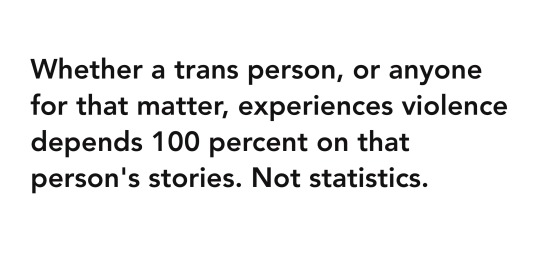
Confronting what’s actually happening
Madge lives in Portland, Oregon. The city is well-known as a haven for trans people. I was shocked Madge believed she was at risk here. So I poked at that belief:
“How long have you lived in Portland as a trans person?” I asked.
“Over seven years,” She said.
“And in those seven years, how many times have you experienced physical violence?” I asked.
Madge had to think about it. I already knew the answer.
“I have never experienced violence,” Madge said thoughtfully.
“OK, and how many times can you remember receiving verbal insults related to your trans-ness in those ten years?” I asked.
“None,” She said.
By now Madge was seeing obvious discrepancies between her fears and her actual life. This was very important, of course. That’s because Madge really wants to be in a relationship. And all the men she’s meeting reflect her fears and worries: They are on the DL. They haven’t fully embraced that trans women are ok to be attracted to. In other words, they feel risk, just like Madge does. No wonder such men show up in her life. She’s a match to them!
Serendipity: the best dating method
I assert many times in this blog that the best way to meet your match is through every day activities out in life. Not online dating. But if a person is afraid of the outside world, I can see how they’d resort to that sucky online experience.
Madge is afraid of the outside world. That fear emanates from her. It blinds her too. It prevents her from seeing guys checking her out. She also can’t tell when a guy compliments her about her appearance. When they do, she ignores it. Or tells the most disempowering story about it. Other times, when she notices a guy staring at her, she nearly always interprets his stare as threatening. When instead, the stare could indicate romantic interest.
Madge and I talked about this in the past.
So if you’re afraid of the world around you, it’s impossible for the Universe to match you with your ideal partner. Your stories create your experience. You also can’t enjoy the fun of such an in-real-life rendezvous! Like this. The Universe is sending matches your way, but if you’ve got that hard shell of protection erected, you’re not going to even notice them.
Its all good tho
The good news is, this situation is reversible. Meanwhile, the Universe will never tire of bringing you ideal matches. That’s something to celebrate. Many people worry that the pool of eligible partners is too small.
Poppycock!
There are an unlimited number of people looking to be with you. Just because you don’t see them, doesn’t mean they’re not there!
The good news for Madge is, she now realizes something that’s been blocking her for a long time. Now she can start dismantling it. And in doing so she can let in the men she wants to meet. She’s already made progress. The men she meets are improving. Meanwhile, there’s a lot more progress ahead.
Maybe you’re struggling to meet your match. Let’s figure that out. It 100 percent has to do with stories you’re telling. Thankfully, telling positive stories and weeding out disempowering ones is my speciality. So let’s talk.
#transgender#transamorous#mtf#transattracted#transgirl#transisbeautiful#transsexual#transamorous men#transattraction#transamorous network
0 notes
Text
Qliphoth - Wikipedia
In the Zohar, Lurianic Kabbalah, and Hermetic Qabalah, the qlippoth (Hebrew: קְלִיפּוֹת, romanized: qəlīppōṯ, originally Jewish Babylonian Aramaic: קְלִיפִּין, romanized: qəlīppīn, plural of קְלִפָּה qəlīppā; literally "peels", "shells", or "husks"), are the representation of evil or impure spiritual forces in Jewish mysticism, the polar opposites of the holy Sefirot.[1][2]
The realm of evil is called Sitra Achra (סִטְרָא אַחְרָא sīṭrāʾ ʾaḥrāʾ, the "Other Side") in Kabbalah texts.
The Qlippot are first mentioned in the Zohar, where they are described as being created by God to function as a nutshell for holiness.[3] The text subsequently relays an esoteric interpretation of the text of Genesis 1:14, which describes God creating the moon and sun to act as "luminaries" in the sky. The verse uses a defective spelling of the Hebrew word for "luminaries", resulting in a written form identical to the Hebrew word for "curses". In the context of the Zohar, interpreting the verse as calling the moon and sun "curses" is given mystic significance, personified by a description of the moon descending into the realm of Beri'ah, where it began to belittle itself and dim its own light, both physically and spiritually. The resulting darkness gave birth to the qlippot.[4] Reflecting this, they are thenceforth generally synonymous with "darkness" itself.[5]
Kabbalistic cosmology of Isaac Luria, the qlippot are metaphorical "shells" or "peels" surrounding holiness. They are the innate spiritual obstacles to holiness, and receive their existence from God only in an external and circumstantial manner, rather than an internal and direct manner. In this sense, qlippot have a slightly beneficial function, as much like a peel protects a fruit, so do the qlippot technically prevent the flow of Divinity (revelation of God's true unity) from being dissipated as it permeates throughout the various facets of Creation. Nevertheless, as a consequence, the qlippoth conceal this holiness, and are therefore synonymous with what runs counter to Jewish thought, like idolatry, impurity, rejection of Divine unity (dualism), and with the Sitra Achra, the perceived realm opposite to holiness. Much like their holy counterparts, qlippot emerge in a descending seder hishtalshelus (Chain of Being) through Tzimtzum (God's action of contracting His Ohr Ein Sof, "infinite light", in order to provide a space for Creation). Kabbalah distinguishes between two "realms" in qlippot, three completely impure qlippot (Hebrew: הַטְמֵאוֹת haṭmēʾōṯ, literally "the unclean [ones]") and the remainder of intermediate qlippot (Hebrew: נוֹגַהּ nōgah, literally "light"). The qlippot nogah are "redeemable", and can be refined and sublimated, whereas the qlippot hatme'ot can only be redeemed by their own destruction.
In some non-Jewish Hermetic Qabalah, contact is sought with the Qliphoth unlike in the ethical-mystical Jewish prohibition, as part of its process of human self-knowledge. In contrast, the theurgic Jewish Practical Kabbalah was understood by its practitioners as similar to white magic, accessing only holiness, while the danger inherent in such ventures involving the intermingling of holiness and impure Magic ensured that accessing the Qlipoth remained a minor and restricted practice in Jewish history.
As you can see, the Jewish don't even want people to gobthere.
1 note
·
View note
Text
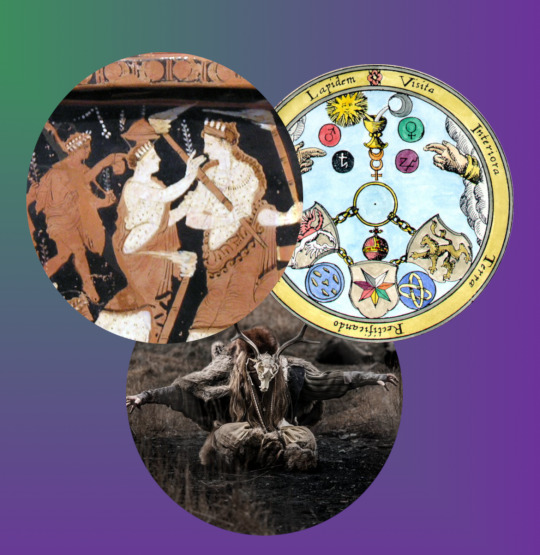
Threads of the Western Esoteric Tradition
“Where is the string that Theseus laid? Find me out this labyrinth place.”
- Bauhaus, In the Flat Field
It may be helpful to look at the entirety of the Western Esoteric Tradition in sometimes competing, but oftentimes complimentary, modes of practice, or threads. Sadly, I need to stop here and point out that any system of categorization is just a guide and a tool for further understanding. Nothing will fit cleanly into these categories. The map is not the territory. These categories were never recognized historically, and I present this just as a “peek under the hood” to understand how the overall tradition has developed. To be totally honest, I have found myself stuck in the spirit/animist model for quite some time now. I have every intention of continuing to practice from that perspective. But I know too many people personally who have had success with other perspectives, so I don’t want to rule them out and using those elements may better my understanding and my magick.
I use the analogy of a thread because a thread is something that can be followed. We can see it as a distinct element. However, a thread becomes much more useful when weaved into a whole. It’s important from an Emergent Magick perspective, which espouses group magick and learning from each other, even when the members of your group have disparate approaches.
I may in the future add further categories or sub-categories, but I think these are general enough to encompass a lot of the different ways magick has and continues to be practiced.
Animist Thread – Arguably the oldest thread in the Western Esoteric Tradition, or world tradition for that matter. But we need to be careful here, in that we have archaeological evidence from pre-historic times, but we can still only make a best guess on what that evidence means. Also, the other threads may be much older than we assume, because their practices do not lend themselves well to archaeological evidence.
A concise definition of animism remains elusive, but I like the definition given by Professor of Religious Studies, Graham Harvey. “Animists are people who recognize that the world is full of persons, only some of whom are human, and that life is always lived in relationship with others.” From a magical perspective, the Animist Thread follows our species interaction with what can generally be called, “spirits.” The magician operates by communicating with these spirits in some form. This includes goetia, all forms of necromancy, and interacting with spirits or personifications of nature.
The animist thread remains prevalent in many magical traditions. As evidenced by various forms of evocation used in multiple systems.
Mystery Thread – The first thing that comes to mind when examining this thread are the Mystery Religions of antiquity. Upon further examination, however, we can see its methods and practices used in a wide variety of traditions, some of which are much older and some newer than the cults associated with the Greek and Roman eras.
The Mystery Thread follows the idea that magical prowess comes through revelation. The practitioner needs to learn the “mystery,” which is sometimes taught, but more often comes from direct experience that cannot be defined in words and only relevant to the individual. The tools of the Mystery Thread include liturgy, exploring a deeper meaning in mythology, and initiation.
An individual following the Mystery Thread most likely seeks out higher and higher levels of initiation to realize their full potential as a magus. Only by having certain experiences will the magus realize their ability enact change through magick.
Correspondence Thread – This thread emphasizes developing systems that give the universe meaning, usually by creating a systematic approach to similarities and differences in any given phenomenon. Traditions with strong emphasis on this thread include Hermeticism, Alchemy, and Kabbalah. For example, certain plants and animals represent magical themes and significance. Celestial phenomena may also be observed, and most of Astrology lays along this thread.
When a magus discovers the hidden meanings of the universe, they can create change by principles of synchronicity. “Like creates like.” “As above, so below.” Most end up creating tables of “correspondences.” Those tables can be concrete or fluid depending on the tradition.
A magus following the Correspondence Thread spend much of their time studying correspondences and adding ideas and things relevant to their interests and to their daily lives.
It’s worth noting again that all extant traditions use a combination of all these threads, sometimes with emphasis placed on one or the other. Where this becomes useful for the individual is finding a method to answer questions relevant to their practice.
Take a basic, general question, “How does the universe work?” From the point of view of the Animist Thread, communicating with beings that experience reality differently can provide some answers. In the Mystery Thread, on can attain higher understanding through direct experience. In the Correspondence Thread, the magus looks for interrelated meaning in what appears to be separate phenomena.
The Order of Emergent Magi embraces all three, in that we recognize non-human persons. We design group ritual to provoke gnostic experiences. And we share systems of correspondence with the group for deeper understanding.
Most importantly, don’t be like me. Don’t embrace any one of these threads so wholeheartedly that you dismiss possible solutions from others.
4 notes
·
View notes
Text
ok i need to sleep but have some half asleep lore dumps & notes:
A Dystopian, Post-Apocalyptic Victorian Fantasy with Cosmic Horror vibes
> an otherworldly cosmic catastrophic event led to the near extinction of humanity and in turn most of the survivors congregated to worship their oppressors in hopes to appease them
[insert a very long time period here]
> new society stays in the confines of a certain area of multiple large cities that govern mostly independently from each other, each city with its own ruling class & patron cosmic deity
> there 5(?) largest tower-like cities, as sickness and disease plagues the ground levels of society so cities are built has high into the sky as possible to avoid the fog of pestilence. The nobles and ruling class reside in uppermost tiers and trickles down form there.
> a plague known as the eldritch sickness is caused by the contaminated air, the poorest class of people are more suspectable to becoming sick. But the plague strikes indiscriminately and it is not impossible for members of high society to become effected.
> The 5 main cities are named after their respective ruling families
> ‘the Veneficus Collective’ is made up of the representatives of each family + a ritually selected orcale who knows many secrets of the cosmic entities and acted as heir representative in human form
The Veneficus Collective
⏳Lepus Futurum // the Keeper
👁️ Avenir Family // the All-Seeing Eye
🎭 Grimir Family // the Masked Acquaintance
🌙 Valko Family // the Lonely Lunatic
📜 Zapisvam Family //the Ceremonial Scribe
⚖️ Dómari Family // the Untamed Absolution
17 notes
·
View notes
Photo
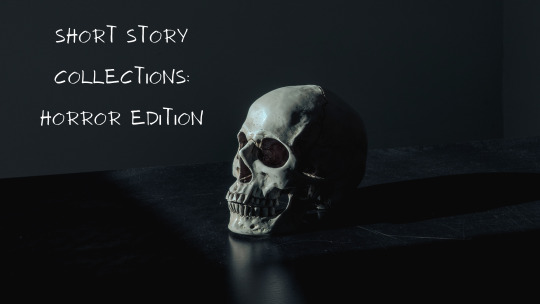


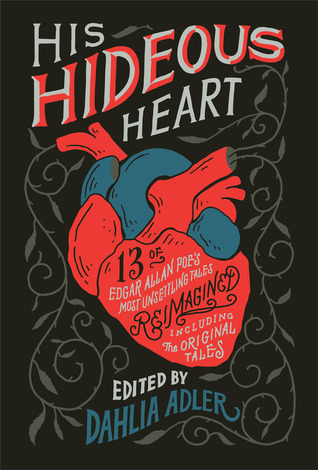

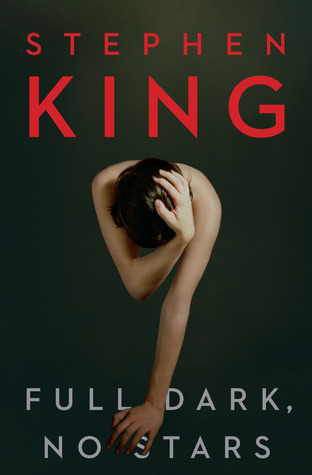
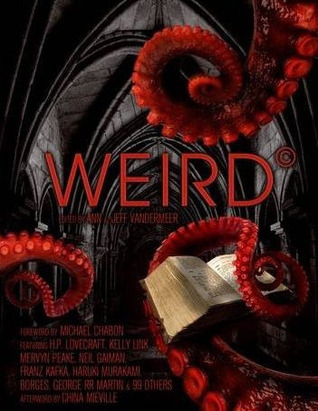
Short Story Collections: Horror edition
In the Shadow of Frankenstein: Tales of the Modern Prometheus by Stephen Jones, Neil Gaiman
Frankenstein... His very name conjures up images of plundered graves, secret laboratories, electrical experiments, and reviving the dead.
Within these pages, the maddest doctor of them all and his demented disciples once again delve into the Secrets of Life, as science fiction meets horror when the world's most famous creature lives again.
Here are collected together for the first time twenty-four electrifying tales of cursed creation that are guaranteed to spark your interest—with classics from the pulp magazines by Robert Bloch and Manly Wade Wellman, modern masterpieces from Ramsey Campbell, Dennis Etchison, Karl Edward Wagner, David J. Schow, and R. Chetwynd-Hayes, and new contributions from Graham Masterton, Basil Copper, John Brunner, Guy N. Smith, Kim Newman, Paul J. McAuley, Roberta Lannes, Michael Marshall Smith, Daniel Fox, Adrian Cole, Nancy Kilpatrick, Brian Mooney and Lisa Morton.
Plus, you're sure to get a charge from three complete novels: The Hound of Frankenstein by Peter Tremayne, The Dead End by David Case, and Mary W. Shelley's original masterpiece Frankenstein; or, The Modern Prometheus.
As an electrical storm rages overhead, the generators are charged up, and beneath the sheet a cold form awaits its miraculous rebirth. Now it's time to throw that switch and discover all that Man Was Never Meant to Know.
She Said Destroy by Nadia Bulkin
A dictator craves love--and horrifying sacrifice--from his subjects; a mother raised in a decaying warren fights to reclaim her stolen daughter; a ghost haunts a luxury hotel in a bloodstained land; a new babysitter uncovers a family curse; a final girl confronts a broken-winged monster... Word Horde presents the debut collection from critically-acclaimed Weird Fiction author Nadia Bulkin. Dreamlike, poignant, and unabashedly socio-political, She Said Destroy includes three stories nominated for the Shirley Jackson Award, four included in Year's Best anthologies, and one original tale, with an Introduction by Paul Tremblay.
His Hideous Heart by Dahlia Adler, Kendare Blake, Rin Chupeco, Lamar Giles, Tessa Gratton, Tiffany D. Jackson, Stephanie Kuehn, Amanda Lovelace, Marieke Nijkamp, Emily Lloyd-Jones, Hillary Monahan, Caleb Roehrig, Fran Wilde
Thirteen of YA’s most celebrated names reimagine Edgar Allan Poe’s most surprising, unsettling, and popular tales for a new generation.
Edgar Allan Poe may be a hundred and fifty years beyond this world, but the themes of his beloved works have much in common with modern young adult fiction. Whether the stories are familiar to readers or discovered for the first time, readers will revel in Edgar Allan Poe’s classic tales, and how they’ve been brought to life in 13 unique and unforgettable ways.
The Doll-Master and Other Tales of Terror by Joyce Carol Oates
From one of our most important contemporary writers, The Doll-Master and Other Tales of Terror is a bold, haunting collection of six stories.
In the title story, a young boy becomes obsessed with his cousin’s doll after she tragically passes away from leukemia. As he grows older, he begins to collect “found dolls” from the surrounding neighborhoods and stores his treasures in the abandoned carriage house on his family's estate. But just what kind of dolls are they? In “Gun Accident,” a teenage girl is thrilled when her favorite teacher asks her to house-sit, even on short notice. But when an intruder forces his way into the house while the girl is there, the fate of more than one life is changed forever. In “Equatorial,” set in the exotic Galapagos, an affluent American wife experiences disorienting assaults upon her sense of who her charismatic husband really is, and what his plans may be for her.
In The Doll-Master and Other Tales of Terror, Joyce Carol Oates evokes the “fascination of the abomination” that is at the core of the most profound, the most unsettling, and the most memorable of dark mystery fiction.
Full Dark, No Stars by Stephen King
"I believe there is another man inside every man, a stranger..." writes Wilfred Leland James in the early pages of the riveting confession that makes up "1922." the first in this pitch-black quartet of mesmerizing tales from Stephen King. For James, that stranger is awakened when his wife, Arlette, proposes selling off the family homestead and moving to Omaha, setting in motion a gruesome train of murder and madness.
In "Big Driver," a cozy-mystery writer named Tess encounters the stranger along a back road in Massachusetts when she takes a shortcut home after a book-club engagement. Violated and left for dead, Tess plots a revenge that will bring her face-to-face with another stranger: the one inside herself.
"Fair Extension," the shortest of these tales, is perhaps the nastiest and certainly the funniest. Making a deal with the devil not only saves Dave Streeter from a fatal cancer but provides rich recompense for a lifetime of resentment.
When her husband of more than twenty years is away on one of his business trips, Darcy Anderson looks for batteries in the garage. Her toe knocks up against a box under a worktable and she discovers the stranger inside her husband. It's a horrifying discovery, rendered with bristling intensity, and it definitely ends a good marriage.
Like Different Seasons and Four Past Midnight, which generated such enduring films as The Shawshank Redemption and Stand By Me, Full Dark, No Stars proves Stephen King a master of the long story form.
The Weird: A Compendium of Strange and Dark Stories by Jeff VanderMeer, Ann VanderMeer, George R.R. Martin, Bob Leman, Haruki Murakami, Mervyn Peake, Michael Chabon, Neil Gaiman, William Gibson, Franz Kafka, Stephen King, Kelly Link
From Lovecraft to Borges to Gaiman, a century of intrepid literary experimentation has created a corpus of dark and strange stories that transcend all known genre boundaries. Together these stories form The Weird, and its practitioners include some of the greatest names in twentieth and twenty-first century literature.
Exotic and esoteric, The Weird plunges you into dark domains and brings you face to face with surreal monstrosities. You won't find any elves or wizards here...but you will find the biggest, boldest, and downright most peculiar stories from the last hundred years bound together in the biggest Weird collection ever assembled.
The Weird features 110 stories by an all-star cast, from literary legends to international bestsellers to Booker Prize winners: including William Gibson, George R. R. Martin, Stephen King, Angela Carter, Kelly Link, Franz Kafka, China Miéville, Clive Barker, Haruki Murakami, M. R. James, Neil Gaiman, Mervyn Peake, and Michael Chabon.
#horror#short stories#horror stories#reading recs#book recs#reading recommendations#Book Recommendations#library#public library#reading list#tbr#currently reading#booklist#booklr#scary stories
38 notes
·
View notes
Text

Odu
Odu, also known as IGBA IWA ODU, the container of existence is the wisdom of Olodumare, mankind’s redemption and truth towards a more divine life that is easier to achieve with giving respect to the divine feminine energy of Awon Aje. The energy of Odu spreads through the world like the energies of Iyaami Osoronga, Osun, Oya, Yemaja and Olokun to name a few. Odu’s powers are to be respected. She is that ancient voice speaking in divine illustrations with magical poems and wisdom that are coded references to ritual magic, cosmology and metaphysical science.
Odu is the female principle imagined as a container, the fourth elemental being to issue forth the Python’s egg. She is metaphysically seen seating on her mysterious cylinder box, in deep thought, and meditating in the middle of the universe. Then she calls out to her four advisers: Obatala, Obaluaye, Ogun and Oduduwa to get them to agree on her departure by promising revelations to those of her children (Awo Orunmila) who come to solicit her properly in her house in the forest.
There in the house that sits upon the sphere has become a box containing a Calabash (her body) which contains the four calabashes given to her in those occasions by the four advisers. Obatala gave Odu a calabash full of chalk (Efun). Obaluaye gave Odu a calabash full of his favorite substance called Camwood (Osun’s menstrual blood). Ogun gave Odu a calabash full of charcoal (Eedu). And Oduduwa gave Odu a calabash full of Mud (Eere).
These gifts imply to the four roads leading to the four corners of the universe. They are the original four major signs Ogbe Meji, Oyeku Meji, Iwori Meji and Idi Meji, and from the egg within becomes the womb, passivity becomes creativity personified. Igba Iwa Odu becomes an Orisha, the divinity worshipped by diviners who attained the highest degree of self-knowledge, the Orisha self. Odu who is validated as an esoteric principle of feminine universal energies and wisdom. She is also the wisdom installed in all women personalities and feminine traits. She is the voice of reasoning. She is the Divine Mother, with whom one enters into a covenant for all good things. The Mother that put her breast of wealth into her child’s mouth. She is the fire residing over the head that burn more than the real fire. Odu is the blessing we ask her to shower us with. She is the Mother we pray to never allow our enemies to know our life secrets. The symbol of the sky and earth, the Yang within the Yin in their fecund union, container of the supreme wisdom of Ifa. And it is only in a dogmatic sense that the struggle for dominance between Male and Female becomes a central component of life on earth that is repeated over and over in the world.
The foundation of this struggle is Man’s acknowledgement of Women’s superior spiritual powers that cannot be taken from them, that is based in Women’s abilities to create life, nurture and love. The woman’s vagina is the third dimensional portal into Mother Earth. In order for all souls to have a physical experience here on this planet, they must come through her portal. She carries within herself the “Gateway to Heaven” and the primordial waters in which we shall return to be reborn.
The calabash IGBA IWA ODU is a symbol for this womb. The Calabash of IGBA IWA ODU symbolizes the womb in both the sense of the female reproductive organs as well as in the creative sense of the transformation of Ancestral energies and divine wisdom. The calabash shape is taken to represent heaven and earth with an extended meaning representing the entire universe. There within the calabash is a mystical zone in the form of an alternate consciousness of the universe or the entrance to another world that Orishas, Irunmoles, Ancestors and practitioners can travel between these two worlds from. The marriage of these two substances is a sexual metaphor for the union of semen and menstrual blood to create life. The spiritual egg within Odu allows Divine Spirits to stand before primordial matter and from their union the great souls of the world are created.
In Ifa Cosmology the metaphysical connection with the spiritual egg is the idea of a sacred bird that drops the egg into the primordial waters of space and chaos (Oyeku Meji). The egg was incorporated as a sacred sign in the cosmogony of every person on the earth and was revered both on account of its form and its inner mysteries. Odu within the earliest mental conceptions of man, was known as that which represented the origin and the secrets of existence. The spirit of Odu, being the esoteric wisdom of Olodumare, is inter-connected with every aspect of human creative divinity. The human egg is the female reproductive element that contains within itself all the essentials for development, leaving the sperm with the role of activating an already prepared system originated with supernatural acts of divine creation and potential for an even greater evolution.
18 notes
·
View notes
Text
Unlocking the Mysteries: A Guide to Tarot Card Reading in Kolkata
In the vibrant city of Kolkata, where tradition and mysticism entwine, the art of Tarot card reading has found a profound resonance. Exploring the mystical realm of divination, Kolkata has become a hub for seekers and enthusiasts alike. In this comprehensive guide, we delve into the enigmatic world of Tarot, uncovering its secrets, and providing a roadmap for those seeking to unlock the mysteries within.
The Essence of Tarot
Tarot cards, with their intricate symbols and archetypal imagery, serve as a powerful tool for introspection and foresight. Each card carries a unique energy, offering insights into the past, present, and future. The practice has gained immense popularity in Kolkata, drawing individuals like moths to the flame, eager to unravel the cosmic mysteries concealed within the cards.
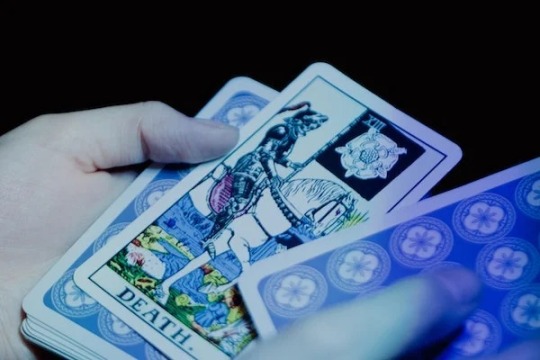
Navigating the Spiritual Landscape
Understanding the Basics
To embark on a journey of Tarot exploration, one must grasp the fundamental concepts. The Major Arcana, a series of 22 cards, represents significant life events, while the Minor Arcana delves into the day-to-day aspects. Aspiring readers often find solace in connecting with experienced guides who illuminate the nuances of each card.
Meet Rajnee Garg Kesri
In our quest for mastery, we encounter the luminary Rajnee Garg Kesri, a seasoned Tarot practitioner whose expertise transcends conventional boundaries. With a wealth of experience, Kesri has carved a niche in Kolkata's spiritual landscape, offering profound insights to those seeking clarity and guidance.
Unraveling Kolkata's Tarot Scene
The Pulsating Heart of Esoteric Wisdom
Kolkata, adorned with its colonial charm, is also a melting pot of esoteric wisdom. Numerous Tarot reading centers dot the city, providing a haven for enthusiasts and novices alike. From the narrow lanes of College Street to the bustling markets of New Market, seekers can find an array of Tarot readers, each with a unique approach and perspective.
Tarot Workshops and Events
For those eager to embark on their Tarot journey, Kolkata offers a myriad of workshops and events. These gatherings not only enhance one's understanding of the cards but also foster a sense of community among like-minded individuals. Kesri, as a guiding force, often conducts workshops, imparting her wisdom to aspiring Tarot enthusiasts.
Embracing the Mystical Experience
Personal Readings with Rajnee Garg Kesri
In the kaleidoscope of Tarot experiences, a personal reading with Kesri stands out as a transformative encounter. With an intuitive approach and a deep connection to the cards, Kesri guides individuals through the labyrinth of their own destinies, unraveling threads of insight and revelation.
Beyond the Cards: Tarot and Holistic Well-being
Kolkata's Tarot community extends beyond mere divination. It intertwines with holistic well-being, fostering a symbiotic relationship between mind, body, and spirit. Kesri, in her practice, seamlessly blends Tarot insights with spiritual counseling, offering a holistic approach to personal growth and self-discovery.
Outranking the Competition: A Visionary Approach
Crafting Quality Content
In the digital realm, where information is king, the need for insightful and relevant content is paramount. To outrank competitors, including the article by Rajnee Garg Kesri, our approach is rooted in crafting content that not only informs but captivates. Each word is a stepping stone, guiding readers on a journey of discovery.
SEO Optimization Strategies
To ascend the ranks of Google's search results, a meticulous SEO strategy is indispensable. Leveraging keyword-rich headings and strategically placed keywords, we ensure that our content resonates with the algorithms while maintaining readability for our audience.
As the sun sets over the Howrah Bridge, the mystique of Kolkata's Tarot scene comes alive. In our exploration, guided by the wisdom of Rajnee Garg Kesri, we have uncovered the rich tapestry of divination woven into the city's cultural fabric. Whether you're a seasoned practitioner or a curious novice, Kolkata beckons, inviting you to unlock the mysteries that lie within the cards.
0 notes
Text
Solomon Academy: Drugs

Drugs are a reality of the world many are all too familiar with, it’s no exaggeration to say that most people have at some time had experiences with them or at least with someone who had issues with them.
Practitioners are no different, in fact to practitioners drugs have certain purposes and allure in their quest for mystical prowess.
Drugs and Magics
Stimulants are straight forward in their uses, magic takes a long time and energy, but also great focus. Many practitioners rely on stimulants to keep their mind on edge during long study sessions or rituals where losing one’s focus may have dangerous consequences.
Downers such as cannabis and alcohol are often used in feathering one’s body down when the practitioner intends to leave it; whether through deep lucid dreaming or astral projects.
Hallucinogenics are more esoteric in their uses, with a practitioner’s will and magical spells, the hallucinogenic effects can be guided allowing a practitioner to perceive other times and places with some accuracy, as well as allowing them to see esoteric and abstract patterns in the universe.
Drug Abuses
Being a cabal kid isn’t all fun and games, the pressure to maintain the family arts and excel at one’s studies is massive. Cabal kids are in endless competition with one another, but within and outside of their own cabals as they serve as pawns in the millennia-old fight for magical dominance.
It’s no wonder that many turns to drugs to help them cope. Most common are nicotine and caffeine addiction, the latter taken not only from coffee but also from energy drinks and even caffeine pills.
Slightly less common, but still rather rampant are amphetamines such ad Adderal. In the down times, many cabal kids turn to alcohol to drown out the stress and anxiety, often leading terrible life choices and mistakes.
Not an insignificant amount of Cabal kids have died or experienced a close brush with death from an overdose or combining drugs.
Magical Drugs
It’s a fact, magic can make everything mundanes do better. Drugs are no exception. Over centuries and decades, practitioners have developed magically infused drugs for stronger and more lasting effects.
Down below are some common drug based magical charms.
Charon’s Ferry: A magically infused dose of heroin, Charon’s Ferry induces an artificial sleep which dissociates the practitioner’s soul and carries it down to the underworld. For the duration of the dose, the practitioner appears dead to all forms of perception.
Mr. Hyde: Mr. Hyde is a magical strength, endurance and adrenaline enhancing potion mixed in with normal PCP, someone under the effect of Mr. Hyde is virtually bulletproof, and can crush a man’s skull barehanded. They feel invincible and tireless. On the other hand, they become seething with uncontrollable rage at any minor annoyance.
Aphrodite’s Kiss: The queen of all aphrodisiac, this enchanted ecstasy makes the user energetic, hyper-sensitive, lessens inhibitions and crank up arousal and libido to terrifying levels.
Transcendence: LSD enhanced by magic, transcendence beams the user’s consciousness deep into the astral realms, allowing them to make contact with far away entities where they receive great insight and revelations. If they can remember them.
Chronos’ Downfall: This magically enchanted cocaine literally slows down time for the user, they are faster in both mind and body, their thoughts are clear save for a feeling of invincibility.
Gaia’s Bosom: A popular strand of magically grown cannabis, when ingested or smoked, in addition to the normal effect of cannabis the user feels an all-encompassing connection with their natural surroundings, allowing them to feel things as if it were happening to them. Although potentially overwhelming to sense the rustling of every leaf, the strain is naturally soothing and anxiety nullifying.
Lethe: This magically enhanced Rohypnol doubles down on the drug’s memory altering effects. While some version keeps the sedative effects, others magically remove it, only keeping the memory-related effects, allowing the user to operate while preventing memories passing from short to long term, useful for magical spies against interrogation and mind reading spells.
New to Solomon Academy?
Solomon Academy is a Queer Contemporary Urban Fantasy YA web-serial available for free on Wattpad (Click here to go to the stories directory!). Almost daily, lore entries are posted to this very Tumblr!
Find the Solomon Academy WIP page here! And Catch up on old posts!
36 notes
·
View notes
Audio
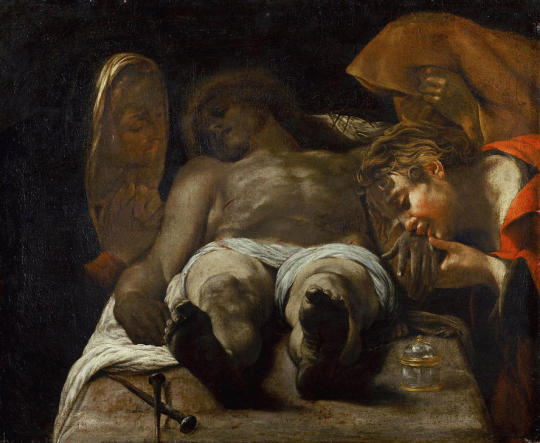
MJÖLNIR
When the thousand years are over, Satan will be released from his prison and will go out to deceive the nations in the four corners of the earth—Gog and Magog—and to gather them for battle. In number they are like the sand on the seashore. They marched across the breadth of the earth and surrounded the camp of God’s people, the city he loves. But fire came down from heaven and devoured them.
Revelation 20:7-9
Christendom inspired by the Son from Galilee who tramped about on roads and fields to lift the masses endures as the seedbed for modern civilization. The paradox of this faith from classical antiquity which is the progenitor of the West is how the lot of Jesus made Pontius Pilate who condemned Him a slave rather than a viceroy and vice versa — sacrifice being greater than the power to kill. Such an anomaly in the lore of the time belied what was then the prototype of polytheism like the many paeans to Zeus who chained Prometheus for gifting fire to mankind or effigies of Jupiter who led men to a premature end for their hubris. If in some hypothetical these same gods were racked by agony in the throes of martyrdom would their folklore be the definition of blasphemy thus pagans from Roman stock took umbrage at Christians whose exegesis of life begged the question: How are the bedfellows of pain and suffering any index of power? The answer to this enigma would be nestled nowhere else but in the cradle of a new religion still in its infancy: For God did not send His Son into the world to condemn the world but to save the world through Him (3:17).
Crucifixion so scandalized Romans and Jews that its minutia survives in a single eye-witness account as discrete from the New Testament’s Synoptics. Harrowing details anathema to civilized company would have otherwise stayed a black-box left to oblivion had they not been recorded for posterity. Because of the sadism endemic in these processions were they hence confined to wastelands beyond city walls away from polite society. Even Christians alive in the Middle Ages when freighted with the gravity of such a death practiced discretion as they were loth to recreate its gore on pictograms until the advent of the Renaissance when a more sober account was elected. The Son hanging limp on a hill so became the cynosure of our faith whose gesture of a cross was ritualized by practitioners in prayer. Even pariahs orphaned by society were keen on finding solace in Jesus who died so others may live. At the crown of Golgotha would ultimately be where the most binding of covenants between Father and Man was wrought to reveal the very kernel of existence for creation: God is love, and he who abides in love abides in God, and God in him ([1] 4:16).
This pearl of wisdom in search for meaning answered the many secrets sought by philosophers over aeons. Sitting cross-legged in meditation with the ambiance of singing bowls and the incantation of hums is no substitute. Pain purveys perspective and the rarest relic of love is a tonic to buck up the souls prostrate with hurt: The love of Father who coos in your ear to carry on is nirvana; The fraternal love from a phalanx of young sappers at the Somme in a hellfire of lead is nirvana; The love of the Son whose lungs were collapsed by Man’s schadenfreude as a billboard for gawkers is nirvana. Love of this kind is a balm for those bloodied by the ranks of evil amidst a war of attrition between heaven and hell since Original Sin. Each event sources its inspiration from a common well of how ‘there is power in the blood’. The debt borne by Jesus in a semiotic way thereby comes to epitomize something like ironclad armour in the lives of ordinary Christians. Over a series of seasons and cycles between birth and decay have the faithful mounted great feats and forays into the unknown for the betterment of their brethren with the same pugnacity seen atop Golgotha.
It is this pledge of service to others which subverts the narcissism of so many creeds that was itself a fillip to the flourishing of the West. Self-denial by abstaining from life’s wish-list would be roundly mocked by outsiders as meek but it was a gateway to humanity’s most productive years in the spectrum of existence. Greater love hath no man than this, that a man lay down his life for his friends (15:13). A stoic lives under this cardinal rule not for reward but rather to honour the love inherited from Jesus which passes down from one generation to the next like an heirloom until a scion comes of age to assume its burden. Why burden? To love thine enemy who is beneath contempt as he rams a spike into your wrist summons a crie de coeur for a species of strength alien to this world. And yet at this very juncture do all the stars align to jolt the sinner from his stupor in breaking free from Satan’s seduction akin to Paul the Apostle who killed scores of Christians before his own conversion. The said burden therefore is knowing evil can only be defeated by the blood of a peacemaker however masochistic it may sound to the layman.
What eventuates is a schizophrenic split allowing for one’s conscience to take stock of its wayward ways long enough to defect from a history of wrongs. The primer to this epiphany is the ugly deed itself which in the universe of celluloid compares to sunlight upon the cursed who wilt in its path. Much like popular culture’s caricature du jour of dualism does the reality of being born again manifest likewise in the renewal of a soul. The introspection breaks the spell just enough to restore agency in knowing right from wrong. So the war between good and evil is carried about in the open as much as it is waged inside of you. Each person in her own right decides who she wants to be whether good or bad though the pity is most opt for vice rather than be an instrument for what is holy. Why? The road is a solitary one. Being good is heresy when the greater part of the world indulges in those acts and lies indigenous to Babylon. Being a persona non grata becomes a birthmark as the rest shun you for your ethics. So the path we plod is not one for the faint of heart neither is it for the weak of mind.
Christendom is inherently contrarian and has been since its formative years. Christians themselves are birds of a different feather who spurn the world’s rehashed idolatry which sycophants are so eager to adopt in earnest. Those cut from our cloth knowing the real world stakes do not shirk from the truth that like Jesus who fell at the behest of sin does this dynamic survive to this day in the highest reaches of power to the lowest alleys of pimps. By analogy we can do more than merely read the hours and minutes of a timepiece — we are the watchmakers. The esoteric wisdom therefrom beseeches us to see the world for what it truly is: a pockmarked battlefield laid to waste by two camps. Scarce few bother to stray from the smoke and mirrors of everyday monotony but behind them are forces aligned to different stripes in service to separate causes. A firefighter who barrels into an inferno to save a pregnant wife versus a rapist who sets his victim afire are a microcosm for the humanity and lack thereof on this earth. Love and hate are the root of Man’s checkered history and Christians are shrewd enough to be skeptical of any authority he purports to dispense.
1 note
·
View note
Text
I've got some older ocs from an original project set in a fantasy victorian-esque dystopia with eldritch deities & horrible gay people that im gonna revisit again :]
The world is run by six noble families that each have a patron deity and govern over independent city-state. Each family has a head warlock that has a direct pact with their family's patron deity & who also acts as the family representative in political issues & conflicts.
The six head warlocks that are ruling class & convene to discuss important issues (lack of resources, the on-going plague & the mutations it causes, etc) is known as The Veneficus Collective. There is almost always political sabotage & espionage even as unwilling allies. Honestly the whole group is full of eccentric weirdos & should not have political power because they Suck
anyways my oc babygirl, Oren, is in the 1st two images & is the head warlock for the Grimr family whose patron deity is The Masked Acquaintance
the last image was old art from abt 2 years ago of some of the main characters, Silas is another head warlock but for the Avenir family & The All-Seeing Eye
ok im done now im sorry for the wall of text but i miss my horrible gay people & will probably talk more abt them in the future and will gladly share more Lore with anyone who is interested :]


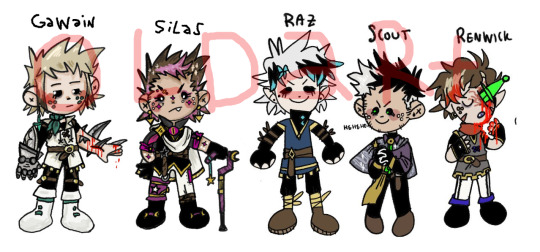
23 notes
·
View notes